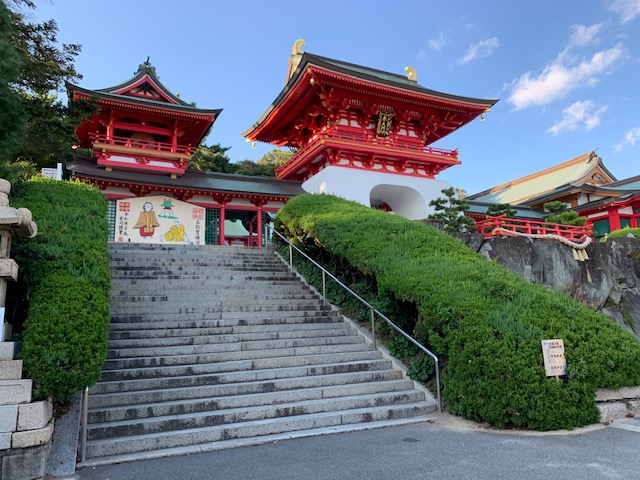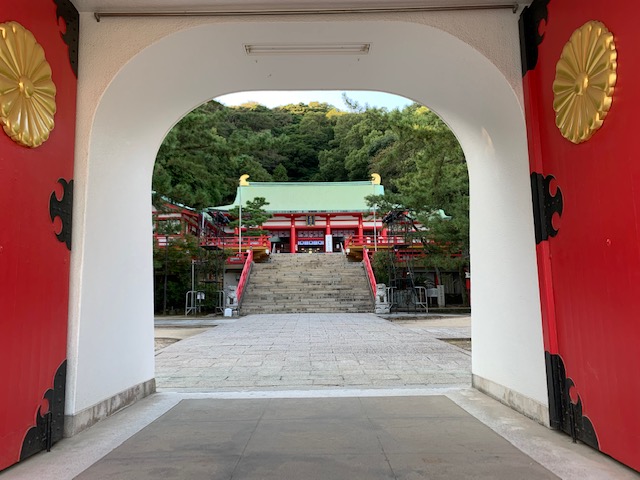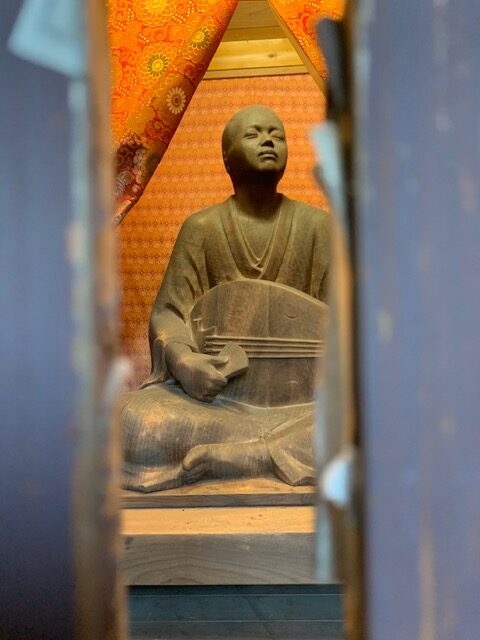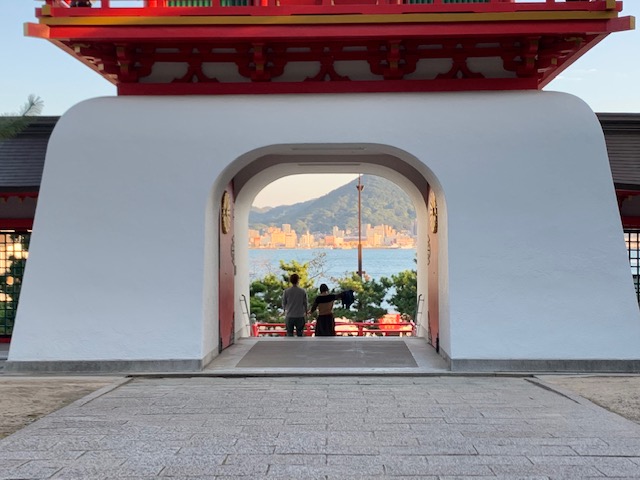For lovers of Japanese literature, the Kanmon Straits mean above all the tragic climax of Tale of the Heike. The fourteenth-century epic is Japan’s great equivalent of The Iliad and charts the rise and fall of the Heike clan, underwritten by Buddhist notions of karma and transience. It is history raised to the level of art.
The story centres on the Gempei War (1180-85), fought between two rival clans, the Heike (based in Kyoto) and the Genji (based in Kamakura). As the war turns in favour of the latter, the Heike are pushed further and further away from Kyoto, retreating along the Inland Sea until their boats are encircled at Dan-no-ura in the Kanmon Straits. Rather than be captured, the mother of the child emperor Antoku, just eight years old, jumps with him into the sea. He is drowned, but she is hauled out of the water by her hair.
Such is the power of the epic that it has spawned countless retellings – in Noh and Kabuki, television and film, manga and anime. Akama Shrine serves as focal point, for it deifies the child-emperor at the place where he died. With its imperial connections, the shrine is kept in pristine condition; bright red doors and golden chrysanthemums are highlighted by the clean white walls. Alan Booth found it garish, but on the day I visited it positively sparkled in the sunshine. In the adjacent cemetery are graves for fourteen Heike warriors, commemorated in an inscribed verse.
the waning moon –
from the bottom of the sea
the Heike harp

In a corner of the shrine precincts is a statue of an earless man, and I stood behind a young mother as she explained to her child its significance. It is Japan’s most famous ghost story, retold by Lafcadio Hearn in Kwaidan. But for Hearn, it is said, the story might well have been forgotten. The mother told her son the story this way…
A blind biwa musician named Hoichi used to come to the temple here to rest and sleep. He was skilled at reciting The Tale of the Heike, and one night was bewitched into giving a performance for the Dragon King, who lived at the bottom of the sea. To protect him from this happening again, the temple priest wrote onto Hoichi’s body the words of the sacred Heart Sutra. However, he omitted to paint the ears, so when the bewitching spirit returned, only Hoichi’s ears were visible. To prove he had tried to fulfil his task, the spirit cut off Hoichi’s ears to present them to the Dragon King. Hence the earless statue in front of us, which the young child, having listened to his mother, was now looking at in awed fascination.
What dreams would assail him that night, I wondered?





Leave a Reply